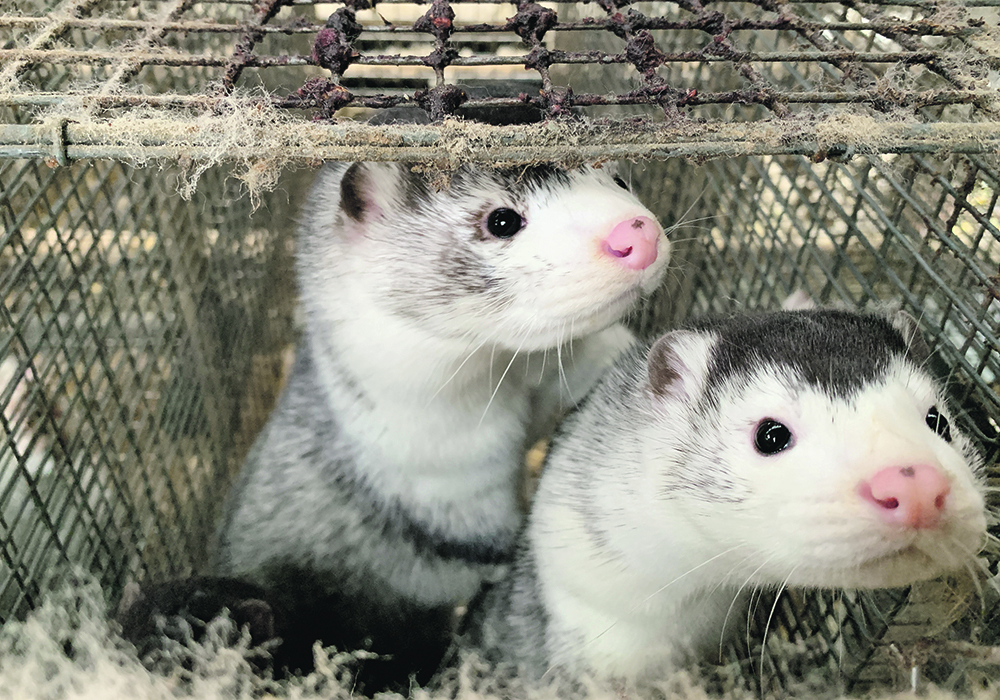Farmed mink raised in Canada could become infected with the COVID-19 virus, says a University of Saskatchewan expert in veterinary microbiology.
That’s not a huge problem, if the virus stays within the mink population.
But if the virus moves from mink and back to humans, it could become a massive problem.
“What we’re really concerned about is it going back into a wildlife species. Then establishing itself as a reservoir in that species,” said Vikram Misra, a professor at the Western College of Veterinary Medicine in Saskatoon.
Read Also

Short rapeseed crop may put China in a bind
Industry thinks China’s rapeseed crop is way smaller than the official government estimate. The country’s canola imports will also be down, so there will be a lot of unmet demand.
“It’s a concern because the virus could evolve and change. Then move back into the human population in a more dangerous form…. The danger it might change and come back… is a public health concern.”
Mink are susceptible to the virus and there are mink ranches in Canada where COVID could quickly spread throughout the farm.
In 2018, Statistics Canada data shows there were 98 mink farms in Canada, with most of them in Nova Scotia and Ontario. The number now is close to 70 farms and two million mink. That’s down dramatically from 2014, when there were 237.
About two million mink is small compared to Denmark, which has about 17 million mink. Earlier in November, the Danish government ordered all farmed mink be culled because a mutated form of COVID was detected in the animals.
The mutated form of the coronavirus has moved into the Danish population.
The cull remains controversial in Demark.
Representatives of Canada’s mink sector say Denmark is not Canada, which is a massive country and has a small number of mink.
“There’s a fear factor,” Matt Moses, Nova Scotia mink farmer and president of the Canadian Mink Breeders Association, told the National Post. “Certainly, those of us in the industry know we are in a very, very drastically different situation here than what there is in Denmark…. In the case where we do have farms that are positive, we would handle it much like we do other illnesses where we quarantine the farm and then monitor the animals for signs of illness and treat them accordingly.”
Mink ranchers have amped up biosecurity to cut the risk of transmission between humans and mink, and the industry is taking the threat seriously. So far, there have been no positive cases on mink farms in Canada. Regardless, the risk is real, Misra said.
“Despite all the precautions that people take, there is always a way of the perimeter failing.”
If it did get into Canada’s farmed mink population, the virus could evolve.
“When a virus goes into a new host… it goes through a period of fairly rapid change and adaptation,” Misra said. “The danger is… it could acquire more virulence. We know the process occurs. It did happen in Europe and could happen anywhere else. That part of it is not hypothetical.”
As of Nov. 5, Denmark had reported 214 cases of humans infected with a variant of the COVID-19 virus.
Misra and his U of S colleagues hope to develop a rapid test for COVID-19 to monitor the virus within Canada’s wildlife population. Such a test will enable scientists to keep an eye on the virus within wildlife to see if a certain species is becoming a reservoir of COVID-19.
“In a very broad way, to keep our finger on the pulse. So if it does occur we have warning of it.”
















